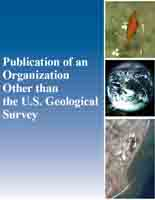The δ13C signature of dissolved organic and inorganic carbon reveals complex carbon transformations within a salt marsh
Links
- More information: Publisher Index Page (via DOI)
- Open Access Version: Publisher Index Page
- Download citation as: RIS | Dublin Core
Abstract
Coastal wetlands have high rates of atmospheric CO2 uptake, which is subsequently respired back to the atmosphere, stored as organic matter within flooded, anoxic soils, or exported to the coastal ocean. Transformation of fixed carbon occurs through a variety of subsurface aerobic and anaerobic microbial processes, and results in a large inventory of dissolved carbon. Carbon source and the roles of aerobic respiration, sulfate reduction, and methane cycling were evaluated within salt marsh peat and the underlying sandy subterranean estuary. There is a large increase in dissolved inorganic carbon (DIC, 7,350 ± 3,900 μmol L−1), dissolved organic carbon (DOC, 1,040 ± 1,480 μmol L−1) and CH4 (14.5 ± 33.3 μmol L−1) within the marsh porewaters compared to creek waters. Alkalinity production (5,730 ± 2,170 μeq L−1) and sulfate removal (1,810 ± 1,970 μmol L−1) indicate anaerobic respiration, however, relative contributions from the various decomposition pathways cannot be identified due to overlapping geochemical signatures. The δ13C of the DOC (−29.0 ± 3.7‰) and DIC (−11.2 ± 1.1‰) produced within the marsh differed from the bulk soil organic matter δ13C (−14.5 ± 0.2‰). We explore a variety of mechanisms that could result in co-occurring depleted δ13C-DOC and enriched δ13C-DIC compared to the bulk soil organic carbon pool and salt marsh vegetation, including selective mineralization, production of δ13C-depleted bacterial biomass, and methane-derived DOC. While important questions remain about carbon cycling pathways, we found evidence of a cryptic methane cycle. Alteration of the δ13C of carbon species complicates source attribution in solid and dissolved phases and careful consideration should be used when carbon is partitioned between in situ salt marsh production and external marine and terrestrial sources.
Study Area
| Publication type | Article |
|---|---|
| Publication Subtype | Journal Article |
| Title | The δ13C signature of dissolved organic and inorganic carbon reveals complex carbon transformations within a salt marsh |
| Series title | JGR Biogeosciences |
| DOI | 10.1029/2025JG008898 |
| Volume | 130 |
| Issue | 6 |
| Publication Date | June 07, 2025 |
| Year Published | 2025 |
| Language | English |
| Publisher | American Geophysical Union |
| Contributing office(s) | Woods Hole Coastal and Marine Science Center |
| Description | e2025JG008898, 17 p. |
| Country | United States |
| State | Massachusetts |
| Other Geospatial | Cape, Cod, Sage Lot Pond salt marsh observatory |


